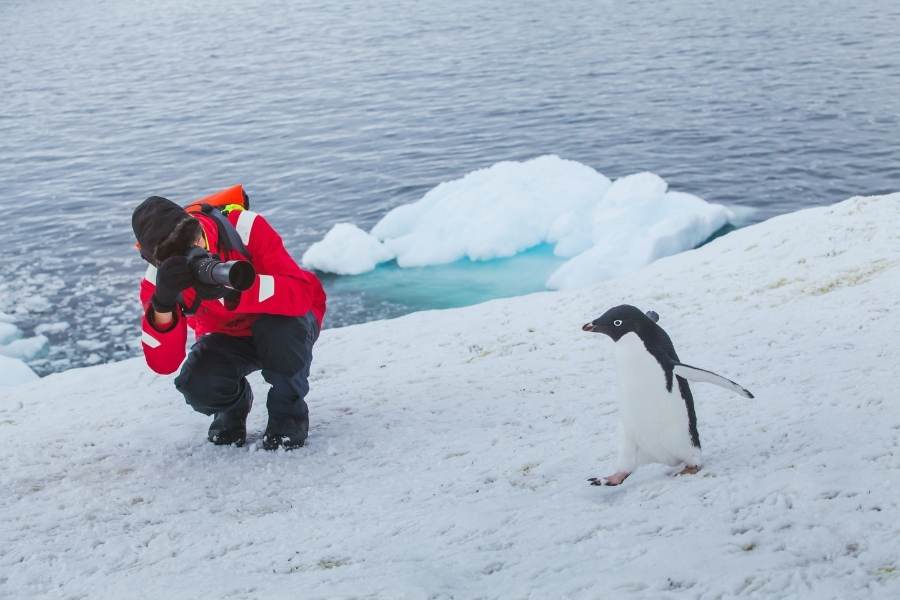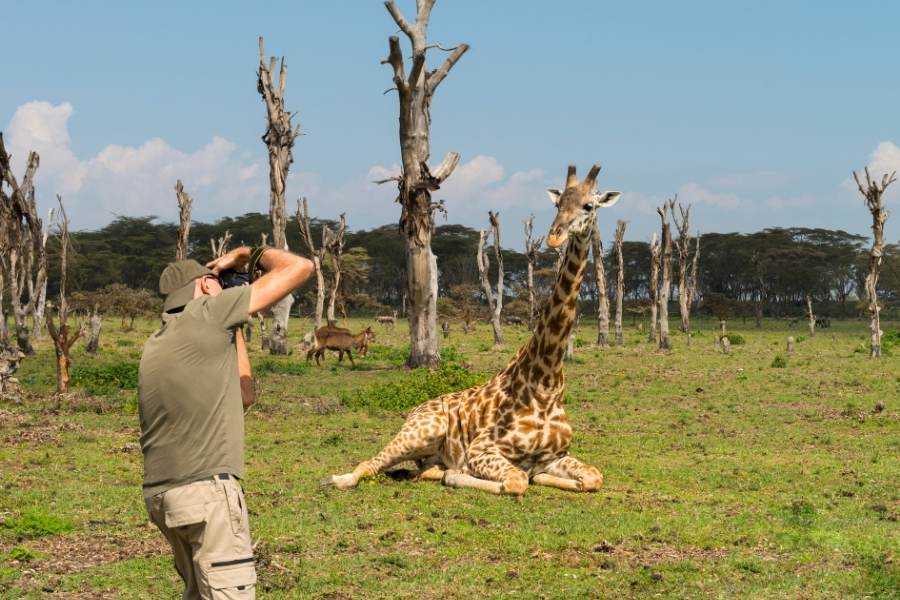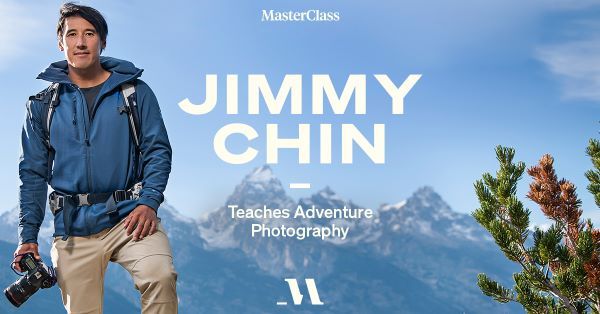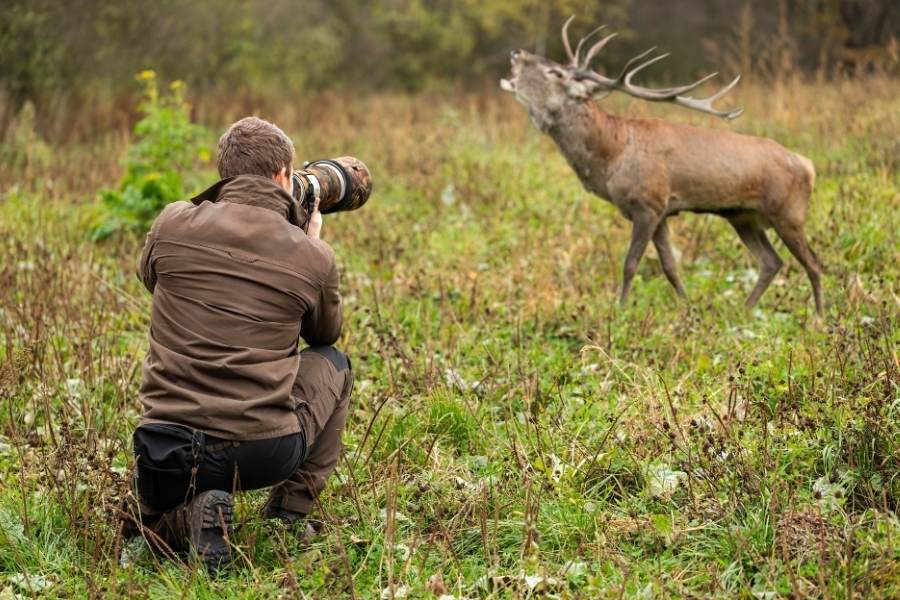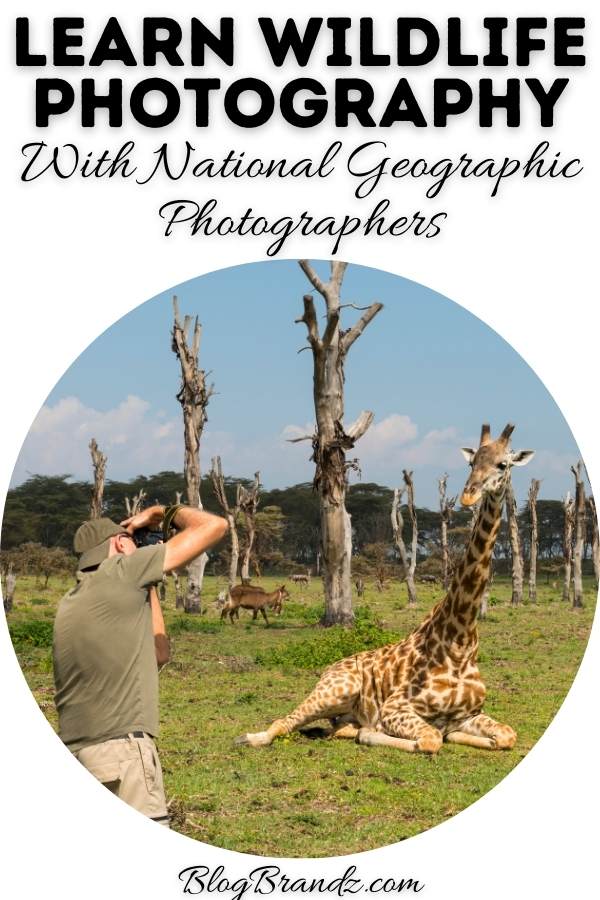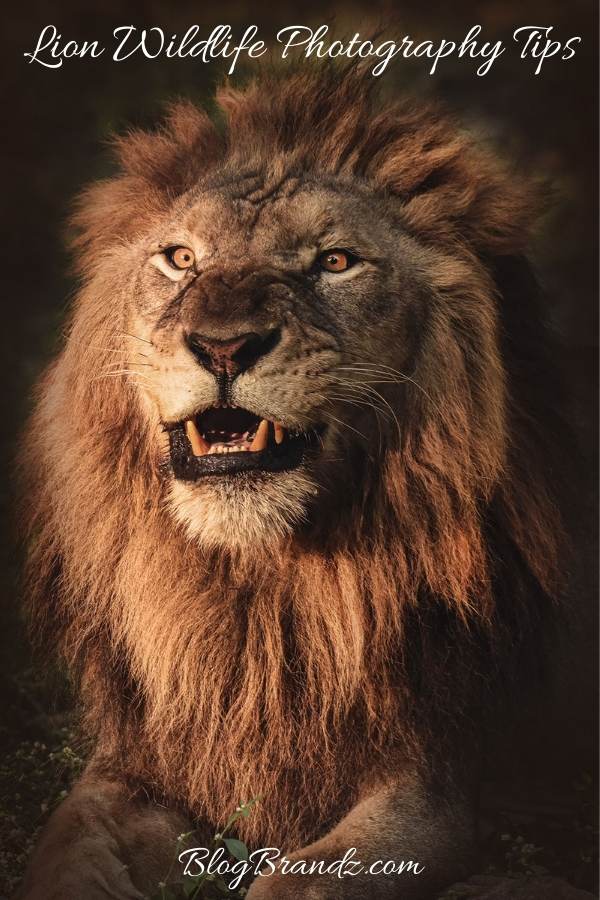Want to learn wildlife photography and nature photography? This article will show you how to become an award-winning wildlife photographer.
Nature and wildlife photography are two of the most exciting and diverse genres of travel photography. Wildlife photographers capture images of animals in their natural habitat, while travel photographers explore new and exotic locations around the world.
Contents
- What is a wildlife photographer?
- Why become a travel or wildlife photographer?
- What skills does a travel or wildlife photographer require?
- What are the challenges of traveling with photography equipment?
- Who hires nature and wildlife photographers?
- How does a nature or wildlife photographer make money?
- How to become an award-winning wildlife photographer
- Photography tips & courses
What is a wildlife photographer?
What does a wildlife photographer do? According to nature and wildlife photographer, Bisakha Datta:
“A wildlife photographer captures the beauty of nature, preserves it for future generations to enjoy, and inspires people to care about the environment. It’s been said that a picture is worth a thousand words and it’s true because a single photograph can convey so much information about an animal or landscape.”
Why become a travel or wildlife photographer?
There are many reasons to pursue a career in travel photography, nature photography, or wildlife photography, but perhaps the most enticing is the opportunity to see amazing places while capturing their beauty through your lens.
As a wildlife, nature, or travel photographer, you’ll be able to visit destinations all over the world and document their natural wonder, culture, and history. Wildlife photography provides an even richer experience, allowing you to get up close and personal with nature’s most beautiful creatures.
For one, you get to see the world in a completely different way. Traveling to new places and seeing different forms of wildlife can be an incredibly exhilarating and humbling experience. It’s also a great way to learn more about other cultures and ways of life.
Nature and wildlife photographer, Bisakha Datta, says:
“The beauty and thrill of working in this field are that you never know what you’ll see or experience next. This makes wildlife photography a very rewarding profession for those who enjoy the outdoors and want to make a difference in the world.”
As a landscape, nature, or wildlife photographer, you have the opportunity to show others the beauty of the world through your photos. Your photos can inspire people at a time when there is so much negativity in the news, and provide them with a much-needed escape from their everyday lives.
Not only can you make a living from your passion, but you will also get to see amazing places and creatures that most people never get to experience. If you have a passion for adventure and exploration, then becoming a travel or wildlife photographer is definitely for you!
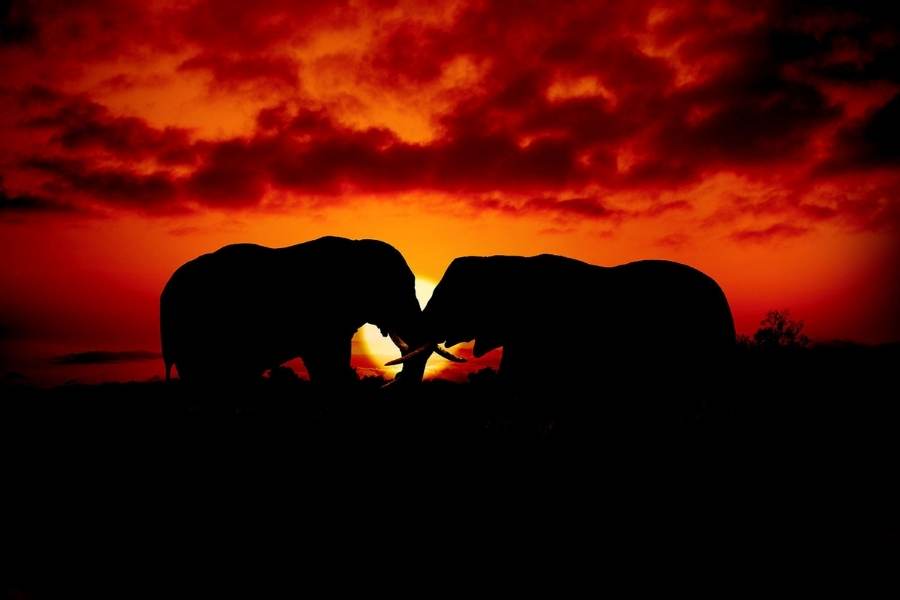
What skills does a travel or wildlife photographer require?
Being a successful wildlife or nature photographer requires more than just a love of adventure and interest in nature, wildlife, and other cultures. It takes careful planning, attention to detail, and a lot of hard work.
As nature and wildlife photographer, Bisakha Datta, says, photographers are often associated with the glamorous life of traveling to exotic locations and taking pictures. However, wildlife photography is a demanding and rewarding career.
It requires patience, perseverance, creativity, and an artistic eye to capture images of animals in their natural habitat. Also, you should know about the place and habitat of the animals and birds that you plan to photograph.
You need a deep passion for nature and wildlife as well as an understanding of animal behavior and knowledge about the conservation issues that affect wildlife.
You don’t need any formal degree or diploma to become a professional wildlife or travel photographer. However, you do need a very creative eye, patience, and technical knowledge.
Here is a list of skills that a travel, nature, or wildlife photographer should have:
- Patience is a very important key skill here. You have to wait for the perfect shot.
- Presence of mind is also an important skill because you will need to think quickly and make quick decisions to capture the perfect moment.
- Knowledge about animal habitats is also required so that you can understand their behavior patterns and anticipate what they are going to do next.
- Technical skills like photography composition, correct exposure, handling region-specific micro-camera lenses, true-color vision, editing, etc. are also necessary for this job so that you can get the best results possible with your work.
- An artistic eye and strong visual analysis. The presence of a live person, animal, or bird can change the entire photograph.
- Practice, practice, practice. That’s the key to being a good photographer.
Becoming a successful wildlife or travel photographer requires a great deal of skill, knowledge, and experience and takes many years of practice and dedication.
But for those who are passionate about it, there’s no greater job satisfaction than returning home from a trip with amazing photos that will give you the chance to amaze people and even win awards as wildlife photographer of the year.
What are the challenges of traveling with photography equipment?
Before traveling you have to research that place, says Bisakha. What is the availability of electricity? If there are power cuts or the place is so far from civilization, you should carry extra power banks.
Carry enough memory cards based on the duration and the subject of your nature photoshoot. Take care of your equipment and keep it organized and with you at all times. Bigger items, like lights and large tripods, may need to be checked in as sports equipment.
Who hires nature and wildlife photographers?
According to wildlife photographer, Bisakha Datta, there are many different ways to become a professional wildlife photographer, but the most common way is to start as an amateur and work your way up to the professional level.
Professional travel photographers can work with magazines or newspapers and get their work published. But first, you have to work as a freelancer.
Some of the best wildlife photographers and famous nature photographers get published in well-known publications like the BBC or National Geographic magazine and are often hired by magazines, newspapers, and documentary film companies.
How does a nature or wildlife photographer make money?
According to Bisakha, who often gets asked how to make money from photography, if you’re waiting for someone to approach you for an assignment or buy your photos you could end up waiting for a long time.
So, how does one earn consistently and continue to fund this delightful profession? You can explore some or all of the ways below to earn money from your photography business.
- Stock photography websites
- Create your own online gallery
- Sell photographic prints and T-shirts
- Publish your own photo books
- Start a blog to share your experiences
- Create a YouTube channel for your videos
- Teach photography workshops
- Sell a photography course
In lean times, you can also use your photography skills to offer different kinds of photography services, such as drone photography, drone videography, outdoor photoshoots, or taking photos of pets as an animal photographer.
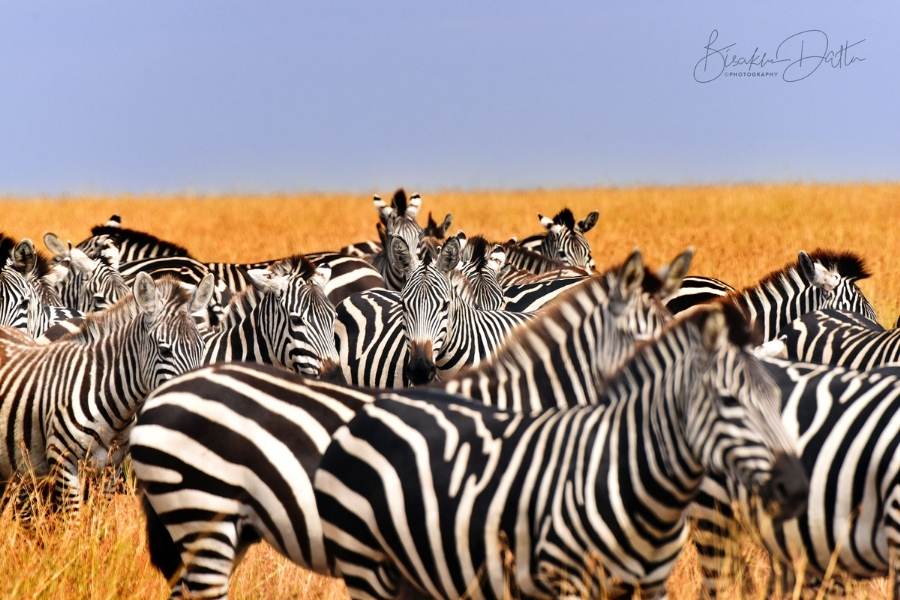
How to become an award-winning wildlife photographer
To become an award-winning wildlife photographer, there are two things you need to do: learn how to take amazing photos of wildlife and enter as many photography contests as possible.
To have any chance of winning an award such as Wildlife Photographer of the Year, your photos must be absolutely stunning. You also need to have a genuine passion for wildlife and photography.
This combination will give you the motivation and drive needed to continue honing your craft, even when the going gets tough.
If you’re passionate about animals and the natural world, have a strong work ethic, and are willing to invest time and effort into honing your skills, you stand a good chance of success. But here are some things you need to do first:
#1. Learn photography skills
Learn as much as you can about photography. The more you know, the better your wildlife photos will be. Be willing to put in the time and effort required to become a master of your craft.
This means taking the time to learn about exposure, composition, lighting, and all of the other technical aspects of photography (e.g., aperture, shutter speed, ISO) and the more creative aspects (e.g., composition, light, and shadow).
This comprehensive photography fundamentals course teaches you how to harness your creative potential and capture your artistic vision through the lens.
There are plenty of resources available online to help you learn photography skills and you can learn the basics of wildlife photography with Bisakha’s free wildlife photography tutorials.
You should also learn about different types of nature and wildlife photography, such as bird photography, landscape photography, and adventure photography.
Also learn about emerging fields of photography, like drone photography and drone videography, which can help you get spectacular wildlife photos and videos.
Make use of online photography classes offered by award-winning photographers like National Geographic photographer, Jimmy Chin, who built his career taking photos at the top of the world, earning him the cover of National Geographic and multiple awards.
In this photography class, he takes you on location to teach you techniques for capturing breathtaking shots and learn different creative approaches for commercial shoots, editorial spreads, and passion projects.
In his MasterClass, Jimmy Chin will teach you how to gather the gear — and the perspective — to bring your photography to new heights with his techniques for planning, capturing, and editing breathtaking photos.
#2. Learn about animal behavior & conservation
There are many ways to learn about animal behavior and conservation, the easiest of which is to watch nature and wildlife documentaries on the Discovery and Nature channels. However, you can also take online classes to learn about this important field.
Learn about animal intelligence, conservation, and activism from the legendary naturalist Dr. Jane Goodall in her first-ever online class. You’ll learn how to act locally and protect the planet.
In her Masterclass, Dr. Jane Goodall teaches how you can conserve the environment and shares her research on the behavioral patterns of chimpanzees and what they taught her about conservation.
#3. Practice, practice, practice
The more you practice photography as an art, the better your chances of producing stunning images that impress. So get out there and take photographs as often as possible.
Start with your local wildlife shoot often and experiment with different techniques. It takes practice to master the art of wildlife photography. The best way to improve is to keep shooting and trying.
#4. Build a good portfolio
A photography portfolio is an essential tool for any professional or aspiring wildlife photographer. It showcases your best work, demonstrates your photographic style, skills, and abilities, and helps you attract new clients and jobs.
In addition to WordPress, Bisakha also recommends using SmugMug, Zenfolio, PhotoShelter, or Squarespace to build your photography website.
To sell your photographs, she recommends platforms like Fine Art America, 500px, DeviantArt, RedBubble, Zazzle, Society6, and Etsy.
When putting together your portfolio, the key is to start small and focus on creating a strong body of work. It’s important to remember that its purpose is to market you and your work.
So choose the strongest images that represent your style and skills. Here are a few tips to help you get started:
- Choose your subject matter wisely. When selecting images for your portfolio, it’s important to choose subjects that reflect your personal style and interests.
- Shoot in RAW format. RAW files give you more flexibility when editing your photos later on.
- Use good composition techniques. Composition is one of the most important aspects of photography, so practice a lot before shooting for your portfolio.
- Shoot lots of pictures! The more pictures you take, the greater the chances of getting noticed and hired by clients.
Also, select a format that’s easy to navigate and provides a good overview of your work. And make sure to keep it up-to-date with new shots as you grow as a photographer.
#5. Learn how to market your portfolio
Want to turn your wildlife photography passion into a full-time business and earn a living from it? Bisakha recommends doing these things:
- Write a photography business plan
- Create a business structure
- Choose your target audience
- Create a social media presence
- Build your personal brand
When it comes to showcasing your travel, nature, or wildlife photography portfolio, you should start by creating a photography website or blog.
This is a great way to showcase your photos in an online gallery format and provide potential clients with information about how they can hire you for their next project.
If you’re not comfortable with designing a website yourself, you can hire a freelancer to create a website for you, but if you want to be able to update it yourself, you must acquire the skills to help you do that.
Promote your services as a nature or wildlife photographer and videographer on sites like Instagram, Facebook, LinkedIn, and YouTube, and build your network on these sites.
Create a gig offering your services on websites like Fiverr, Upwork, and other gig websites. You can showcase your photographic journey as a social media post so users get inspired by your story and photographs.
Here are some tips from Bisakha, to get your social media promotions right:
- Create beautiful and engaging content
- Choose your target audience well
- Communicate with your audience via comment or DM
- Find the best times to post
- Be consistent
Don’t forget to celebrate special occasions like Nature Photography Day (June 15) by offering discounts and sales of your photo prints, workshops, or courses on this day.
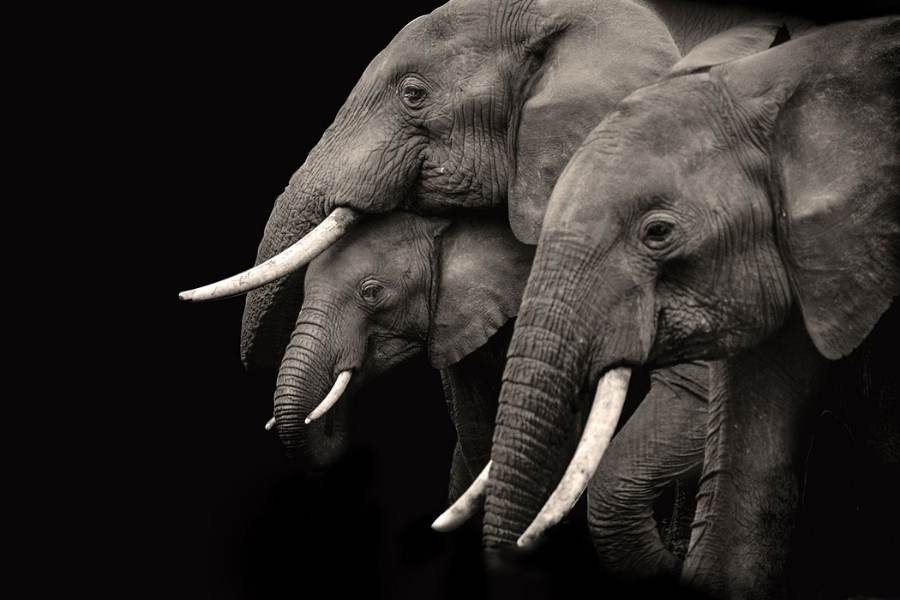
#6. Enter nature & wildlife photography competitions
Submit your work to photography competitions and publications like BBC and National Geographic. If they like your work you will be that much closer to becoming an award-winning wildlife photographer.
Here are some travel, nature, and wildlife photography competitions you can enter:
- Wildlife Photographer Of The Year
- Comedy Wildlife Photography Awards
- Bird Photographer Of The Year
- Nature Photographer Of The Year
- Travel Photographer of the Year
Winning a few of these awards can open up many opportunities for work and help you find new clients. Plus, they look good on your photographer’s resume.
#7. Work with wildlife & travel organizations
Working with organizations involved in wildlife and conservation is the best way to lend credibility to your nature wildlife photography business.
You can tie up with ethical and sustainable travel agencies to help them sell sustainable and ethical wildlife tours, and accompany them as a guide. This will not only increase your income but also defray the costs of travel in growing your wildlife photography business.
Once you have some experience, you can even organize your own wildlife photography tours for budding photographers and hobbyists. As Bisakha says:
“Being an avid traveler I’ve conducted several successful tours in offbeat locations for more hidden natural beauty. Photography to me is not only about capturing the beauty of nature via lens but also deals with spirituality which connects the soul with natural beauty, and helps you grow through self-improvement.”
Tribal Life in the Maasai Mara Village
Photography tips & courses
- Wildlife photography for beginners and amateurs
- Ultimate guide to landscape and nature photography
- Landscape and nature photography complete guide
- Long-exposure photography (Night photography)
- Photography masterclass: A complete guide to photography
- Complete photography: 21 courses in 1 [Beginner to expert]
- iPhone photography: Take professional photos on your iPhone
- Mobile photography: iPhone & Android complete masterclass
- Start your photography business: A photography course
- Sell photos, footage & AI images online: A beginner course
- How to learn travel writing & become a travel blogger
- How to sell art online and make money from your artwork
- Best MasterClasses to learn art, painting, photography & design
- Study filmmaking with the best Masterclass filmmaking courses
© 2022 – 2024, Priya Florence Shah. All rights reserved.
Priya Florence Shah is a bestselling author and an award-winning blogger. Check out Devi2Diva, her book on emotional self-care for women. In her spare time, Priya writes science-fiction novels and poetry and chills with her two-legged and four-legged kids.
Discover more from Business & Branding Tips
Subscribe to get the latest posts sent to your email.
